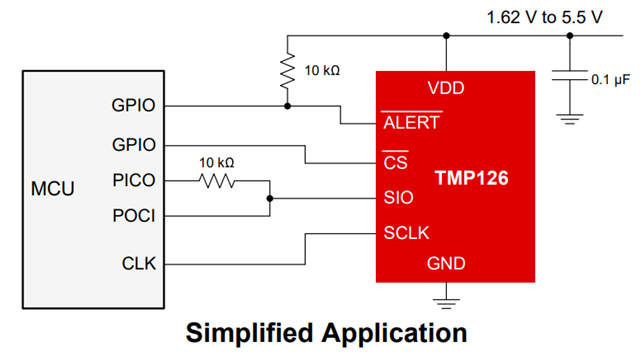Other Parts Discussed in Thread: TMP126, TMP127
Tool/software:
I'm using the TMP126-Q1 on a board. I have a digital connector that brings over the SPI bus (CLK, MISO, MOSI, CS) from a Raspberry Pi 4B.
I was able to configure and talk with the sensor when I have 1 board plugged in. I can poll the ID register to ensure communication works and then read the temperature data.
This all breaks when I plug in another board digital connector. I initially had the 10k isolation resistor, I tried replacing that with a a 0ohm resistor. This allowed me to operate faster (tested up to 6MHz, 10MHz was failing) as opposed to the 500kHz with the 10k. But with 2 boards connected, I am no longer getting data back from the chip.
If I probe directly on the SIO line, I can see the COMMAND word is written fine, but the output byte is either not present, or the pulses are really narrow at the rising clock edge and at a lower voltage. This seems like something is loading down the SPI line? I only pull the CS low for the temp sensor I am talking to, and am polling their IDs one after another. For the one that looks like it is trying to output, I can see the value is 0x2126 which is correct, but it is still being read as 0s since the pulses are practically non-existent. I am using buffers between the RasPi and my board. My board is operating at 2.4V (buffer is stepping down 3.3V to 2.4V).
Any ideas on why this isn't working? I already verified I can still talk to other devices that are on the same SPI bus, but the temperature sensor doesn't like other things connected. If I unplug one of the digital connectors, I can successfully communicate with the other temp sensor, and vice-versa.
Thanks.



